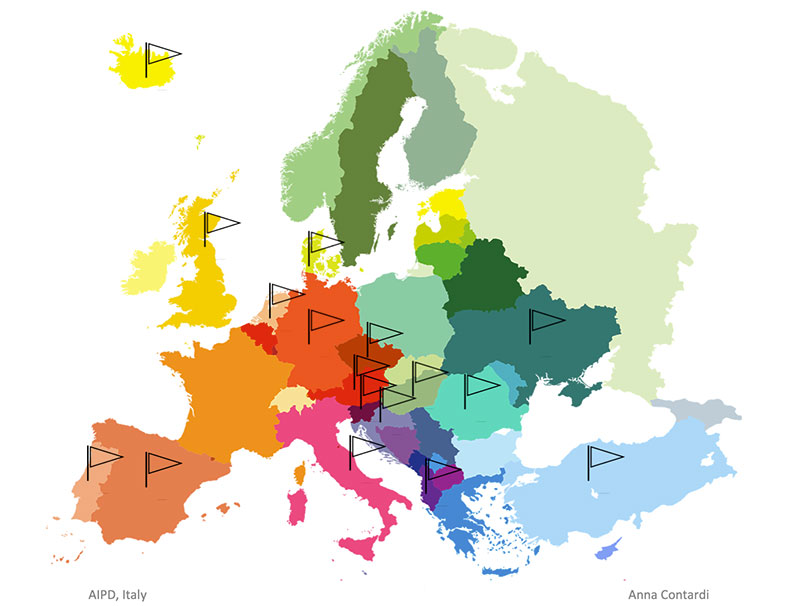A questionnaire was sent to all EDSA members prior to the AGA. Currently there are 40 DS organizations from 33 different countries. The questionnaire was compiled by Anna Contardi (AIPD, Rome) and contained 11 questions on inclusion in the first labour market.
20 associations from 17 countries answered the questions.
The countries that were involved: Albania, Austria, Germany, Spain, Hungary, Czech Republic, Italy, Denmark, Netherlands, Ukraine, Portugal, Croatia, Romania, Iceland, Turkey, Scotland and Slovenia. Most of the respondents confirmed that these are often estimated figures because there is no exact data on the subject.
Some associations – from Sweden, Norway and Switzerland – replied that there was so little data available in their country that they could not provide any information.
Results
The first question asked to indicate where adults with DS go after leaving school: Do they stay at home, visit an activity centre, work in a workshop or inclusion company or are they active in the primary labour market.
Only a very small percentage have a job in a regular company, around 2%. The highest figures here came from Italy (13%), Portugal and Germany (10%), Spain (5%) and Austria (4%). However, in most countries there is no job opportunity at all and the majority of adults with DS remain at home without any employment. Only in the Netherlands, Austria and Germany do almost all adults with DS work and are not at home.
2. Is there a law that promotes the integration of people with DS in the workplace (including a more general disability law)?
With the exception of one country (Slovenia), everyone answered yes.
3. How does the state promote labour inclusion?
The most frequently mentioned measure was that there was a salary subsidy or that the companies received other financial support. That may be tax benefits or there may be no fine to pay if you do not employ people with disabilities. In most countries the rule applies that a company of a certain size is obliged to hire one or more disabled persons, if this is not done, a fine must be paid.
4. Does a worker with DS who works in the open market receive the same salary as his colleagues?
Approximately half agreed, the others answered no.
5. Does an employee with DS in a sheltered workshop receive a salary equal to the minimum wage?
No for 73% and yes for 27%.
6. Are people with DS employed full time, part-time or just a few hours?
Most of them work part-time (between 20 and 25 hours). Occasionally, people with DS have a full-time job. Four countries replied that if the adults work anything at all, it is less than 15 hours a week.
7. Are there any support measures for job integration?
There are no such measures in Romania, Croatia and Turkey. In the other countries there is both private and state support, with private integration services being more widespread.
8. Does your association also offer support in job searching and job assistance?
Eleven organizations confirmed this, eight do not offer this service.
9. If YES, with which of these interventions?
The answers were: with vocational orientation and training courses, searching for interested companies and their sensitization, mediating between suitable candidates and employers, job coaching, informing entrepreneurs and their staff.
10. Which method is most frequently used to promote vocational integration?
“Training on the job” was mentioned seven (7) times. Five (5) countries indicated that young people first received a more general vocational training and four (4) times specific vocational training was mentioned.
11. What is the main obstacle to the employment of people with DS in your country?
The biggest obstacle was: too little support (9), prejudices among employers, in the world of work in general (5), lack of state support/legislation (4) insufficient preparation of young people with DS (4), resistance of families (4)

